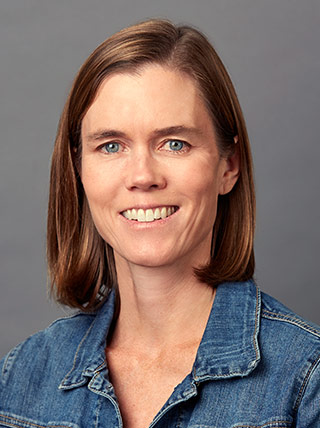CHR Rises to Sleep Study Challenges
Stories - November 25, 2025

By Jill Pope, Senior Scientific Editor
 Erin LeBlanc, MD, MPH
Erin LeBlanc, MD, MPH
In 2023, CHR started enrolling participants in the Sleep for Health study, led by Distinguished Investigator Erin LeBlanc, MD, MPH. The study is testing whether treating insomnia with Cognitive Behavioral Therapy (CBT) results in lower blood sugar for people with prediabetes. Participants are randomly assigned to receive either CBT for insomnia or sleep education, and the goal is to learn whether improving people’s sleep can help prevent type 2 diabetes.
Two years in, the study is on track to meet its enrollment targets: more than 200 people have joined, and LeBlanc and her team are confident they will reach 300 by October 2026.
The numbers don’t tell the whole story, however. In practice, carrying out this study has posed unique challenges. Stefan Massimino, the study’s co-project manager, along with Chris Catlin, says, “This is a complicated study. But the fact that we are on schedule, if not slightly ahead, just goes to show the study team’s coordination and teamwork, because it's a lot of work on everybody's part.”
The work begins with searching electronic medical records to identify KPNW members who meet basic study criteria. The study team mails this group flyers explaining the study and e-mails an invitation to complete a short, web-based eligibility screener. Then a recruitment team member reaches out, explains the study, and talks about next steps.
With most studies, “If they want to participate, you just consent them in, tell them what the study is, and they go forward,” says Massimino. But this study needs to look at factors not found in the medical record. Potential participants need to complete ten days of sleep diaries, go to CHR’s clinic for a blood draw to ensure their blood sugar is in the prediabetic range, and do an at-home test to rule out moderate or severe obstructive sleep apnea.
These pre-screening steps can take up to two months. And, once completed, only a fraction of those interested can enroll, due to the study’s strict eligibility requirements. The study’s recruitment rate is 0.8%, meaning fewer than 1 in 100 people contacted can join.
Mapping the Journey
For this study, participants must attend three clinic visits lasting 2.5 to 3 hours each. For each visit, participants must fast beforehand, drink a sugary drink, have three blood draws, and fill out questionnaires on site. After each visit, they must also wear two devices for 10 days: a watch that tracks sleep and activity, and a continuous glucose monitor to track blood sugar. Over the same 10 days, they must keep a sleep diary and complete an online diet recall.
As the study got underway, Massimino said, the team soon realized participants needed help to understand what was expected of them. “Sometimes people weren't realizing they had to come back two more times,” he recalled. “The consent document is a lot for someone to take in, so we thought let's make a visual, a journey map, to show all the things they have to do.” The map also explains the payments participants will receive as they complete the different study steps.
Keeping Participants on Track
The Sleep for Health recruitment team guides participants through each step of their journey, serving as a frequent point of contact. The team includes Kristen Semelsberger and Delanie Brown, each a Research Specialist III in CHR’s Research Engagement, Assessment, Development, and Interventions (READI) Department.
Since each participant joins at a different time, each has a unique journey timeline. To keep participants moving forward, Semelsberger and Brown created more than a hundred different alerts in the REDCap data collection system. When an activity is entered into REDCap, an email alert is triggered that prompts the team to prepare for the person’s next step.
Semelsberger and Brown both had prior experience with editing and creating projects in REDCap that proved useful. Semelsberger explained, “We were able to say ‘Oh, we could use this alert, let's set it up this way.’” Having both an understanding of what alerts were needed, and the ability to create them, she said, “has been really valuable.” She adds, “I've never been on a study this complex in terms of all the little things you need to remember to do.”
Close Partnership with Clinic
The Sleep for Health research clinic leads, Keelee Kloer and Libby Rassi, both Clinical Research Coordinators, handle study visits, along with other clinic staff. They said this study requires an unusual amount of coordination. For example, the READI team handles informed consent, something the clinic normally does. The READI team prepares participants for visits, and the clinic team conducts the visits. The READI team gets activity-tracking watches ready for participants; the clinic team places continuous glucose monitors.
Because their tasks are interdependent, communication is nearly constant. “Microsoft Teams has made it a lot easier because it's so real-time,” Massimino says. Adds Kloer, “We also use the REDCap system to kind of talk to each other. When we enter in our portion, they're alerted for things, and then we have a spreadsheet that helps us communicate back and forth as well. There are a lot of hand-offs. We've just never had this type of very inclusive study where both teams are doing two major parts.”
While the Sleep for Health study has presented new challenges for CHR’s staff, the study’s on-target enrollment numbers show that they have risen to meet them. Dr. LeBlanc, the study’s Principal Investigator, says, “I know this study is complicated, and I am so grateful for each member of the study team. It is their dedication to the study and their amazing ability to connect with participants that has led to our study’s success.”
By leveraging the specialized expertise of CHR teams and the collaborative culture of the center, the Sleep for Health study has the potential to identify a transformational approach to preventing type 2 diabetes.